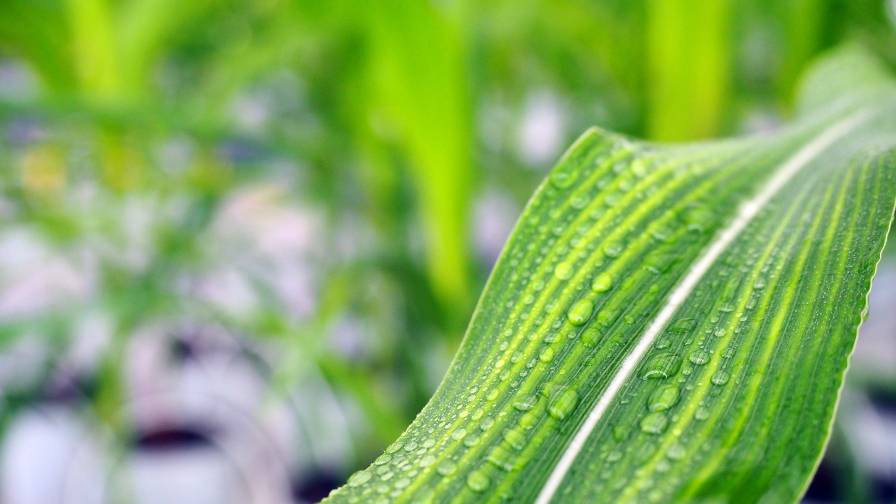Global Biofuels: Changing The Landscape
With governments worldwide offering tax breaks and incentives for biofuel research and production, demand for biofuels continues to grow, offering great opportunities for global agriculture. A challenge for manufacturers is that countries are at a wide range of stages in the development of biofuel technologies and strategies, involving a number of different crops and processes.
-
US: The US uses 140 billion gallons of fuel each year, a figure that’s expected to rise to 290 billion gallons by 2050. The 2005 Energy Policy Act encourages fuel suppliers to use 7.5 billion gallons of renewable fuels by 2012; starting the following year, they’ll be required to use an annual amount of 250 million gallons of cellulosic ethanol. Additionally, more than US $4.2 billion has been dedicated for loans, grants, and production incentives aimed at increasing research, development and production of cellulosic ethanol; the 2007 Farm Bill proposals provide for an additional $1.6 billion for research and $2.1 billion in guaranteed loans.
Corn-based ethanol makes up 95% of US biofuel production, using 15% to 20% percent of US corn’s 80 million acres. To prevent a decline in exports and feedstocks, US corn acreage will need to expand by at least an additional 10 million acres. However, land scarcity could become an issue, as more acres of cropland and even pastureland will have to be turned toward biofuel crops to produce enough to offset increasing world petroleum use. US corn must increase to 14 billion bushels each year to meet all market demands, while soybeans will have to increase to more than 2.5 billion bushels. With the US focus on corn ethanol driving corn prices higher, though, some farmers are dropping their corn-soybean rotation to grow corn-after-corn, making soil erosion and nitrogen depletion major concerns. High input double-crop corn requires massive amounts of pesticides and synthetic nitrogen fertilizer, which degrades topsoil, inhibiting future crop output. In drier parts of the US, additional corn crops grown for ethanol production require irrigation, drawing water from already strained aquifers that cannot bear the additional burden.
Switchgrass and other perennial grasses used for cellulosic ethanol can be grown in poor soil, with deep roots adding organic matter. Cellulosic ethanol also can be made from corn stalks and other corn residue.
-
Brazil: In 2006, Brazil became energy independent, thanks to a sugar-cane-based ethanol program which replaced 40% of the country’s gasoline use. Brazil’s long commitment to ethanol development, along with state and federal tax breaks and flex-fuel vehicles (introduced in 2003 and making up more than 70% of new vehicle sales by the end of 2005) have made it a leader in ethanol production and the world’s number one ethanol exporter. In 2006, Brazil exported 3.3 billion liters of ethanol, a 30% increase from 2005.
Brazilian corn prices have shot up to 10-year highs, creating estimated crop production for 2006/07 of 45.6 million metric tonnes (Mt), a 12% increase over the previous year. Of this record amount, 1.5 million Mt have already been sold — before they’ve even been planted.
While producers feel pressed to plant even more, the high corn prices precipitate higher ethanol production costs, causing producers to look towards new, non-food crops as biofuel sources. Soy — already shrinking due to producers cashing in on double-crop corn instead of a corn-soybean rotation — is also a high-cost ethanol source. Brazil’s long-term ethanol plans are centered around Jatropha curcas, palm oil, Araucaria angustifolia (from which the pinhao seeds, able to be harvested every three weeks, contain 40% oil) and cellulosic ethanol sources suchas switchgrass. However, in the next year or so, Brazil expects widespread consumption of its cheap sugarcane ethanol.
-
Europe: The EU produced 89% of the world’s biodiesel in 2005, and EU25 oilseed production reached record levels in 2006. Almost 80% of the EU’s biofuel production is biodiesel, coming primarily from Germany (with over half of the EU’s biodiesel production), France, and Italy. Harvests and prices of canola — the EU’s primary biodiesel crop — in Northern and Eastern Europe have been significantly higher for the past three years, with 2006/07 production estimates of 15.75 Mt. Sunflower harvests, while smaller than canola demands, have been reaching record highs and continue to grow.
Spain produces the EU’s largest amount of ethanol, with soybean production increasing throughout Southern Europe. Prairie grasses with rapid growth and high biomass yield such as giant Miscanthus offer future promise in cellulosic ethanol production.
EU policies and programs support Member States’ agriculture communities, as well as establish biofuels goals and standards. The European Commission has set a goal of 5.75% share of transportation fuel from biofuels by 2010.
-
China: Climbing crop prices for corn and other edible grains have caused higher food prices and grain shortages; since 2005, cornstalk prices have soared 500%. Corn-based ethanol production is expected to triple to three million tonnes by 2010, which may force China to begin corn imports by 2008. Concerned over insufficient supplies and declining arable land, China has asked producers to look at alternate ethanol sources like cassava and sweet sorghum.
Sweet sorghum is sugar-rich, highly adaptable and has rapid growth for twice-a-year harvests. Highly tolerant, it can fill the more than 170 million hectares (Ha) of arid, saline-alkaline soil in West and Northwest China. With ethanol production estimates ranging from 5,600 to 7,000 liters per Ha per year, sweet sorghum equates with sugarcane (6,500 liters per Ha per year), and produces cleaner, superior quality ethanol. Sweet sorghum is sown with seed, for only 4.5 kg of seed per Ha planted instead of 5,000 kg or so per Ha of sugarcane stem cuttings.
China’s government plans to increase domestic ethanol use from less than 2% to more than 5% of total fuel consumption, and will continue to provide subsidies, tax breaks, and other financial support for the expanding ethanol industry.
-
India: The majority of Indian ethanol comes from sugar; producers are currently putting out 1.3 billion liters annually, with production expected to rise after June 2007, when ethanol figures will be required to double to 10% of transport fuel. However, large Indian sugar crops are causing water tables to fall.
Future production could see biodiesel from non-edible oils such as Neem, Pongamia pinnata and Jatropha curcas, which can grow on India’s 60 million Ha of wasteland. Pongamia and Jatropha, upon which animals will not graze, can grow in dry, degraded, or infertile soil unusable for food crops. Fast growing and hardy, they also produce an outstanding organic fertilizer after oil extraction. Within the next five years, India plans to replace 5% of its annually consumed 40 million tons of high speed diesel with a Jatropha biodiesel / petro diesel blend.
| Percentage Changes In World Feedstock Prices Under Three Scenarios, Compared With Baseline | |||||
|---|---|---|---|---|---|
|
Feedstock Crop |
Scenario 1* | Scenario 2* | Scenario 3* | ||
| 2010 | 2020 | 2020 | 2020 | ||
| Cassava | 33 | 135 | 89 | 54 | |
| Maize | 20 | 41 | 29 | 23 | |
|
Oilseeds |
26 | 76 | 45 | 43 | |
| Sugar beet | 7 | 25 | 14 | 10 | |
| Sugarcane | 26 | 66 | 49 | 43 | |
| Wheat | 11 | 30 | 21 | 16 | |
|
*Scenario 1: Aggressive biofuel growth without technology improvements. |
|||||
Future Trends
Projections from the International Food Policy Research Institute show that three scenarios exist. In the first, rapid biofuel production takes place with no increase in fuel conservation or technology advances; in the second, cellulosic biofuels are in commercial production by 2015; and in the third, productivity advancement, technological investment, and smart agronomic planning all take hold. As the chart shows, sound agronomic policy and technology innovations are necessary to prevent the cost of biofuel from exceeding that of oil to make biofuel a viable long-term energy solution.
Given the geopolitical forces driving sustainable fuel development, it’s likely that biofuels will be a part of agriculture for a long time to come. Input-intensive corn should remain the main US ethanol source and a major biofuel crop in many other countries, requiring heavy loads of fertilizer and a variety of herbicides to avoid glyphosate-resistance from double-crop corn. Sugarcane and biodiesel crops ranging from canola to Jatropha require manual or irrigation–dripped nutrient and fertilizer application. As technology improves, large-scale biofuel farming will be a money-maker for the farm chemical industry.





